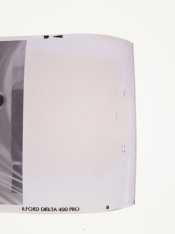anon s
Member
- Joined
- Apr 29, 2012
- Messages
- 28
- Format
- Medium Format
Hello,
I am using 'Adox Adofix Plus' to develop Ilford films.
I made 1+5 500ml fixer and used for 4 films so far.
I did fixer test using a piece of undeveloped 120 films for 4 mins and 8 mins.
Both time I got almost the same result. (2). But it was not totally clear.. I don't think the fixer got uneffective already...but...

(1) undeveloped film
(2) fixer tested film
(3) film which I have developed with whole process one day before the film testing.
result (2) is ok to keep using this fixer??
thanks in advance,
I am using 'Adox Adofix Plus' to develop Ilford films.
I made 1+5 500ml fixer and used for 4 films so far.
I did fixer test using a piece of undeveloped 120 films for 4 mins and 8 mins.
Both time I got almost the same result. (2). But it was not totally clear.. I don't think the fixer got uneffective already...but...

(1) undeveloped film
(2) fixer tested film
(3) film which I have developed with whole process one day before the film testing.
result (2) is ok to keep using this fixer??
thanks in advance,











